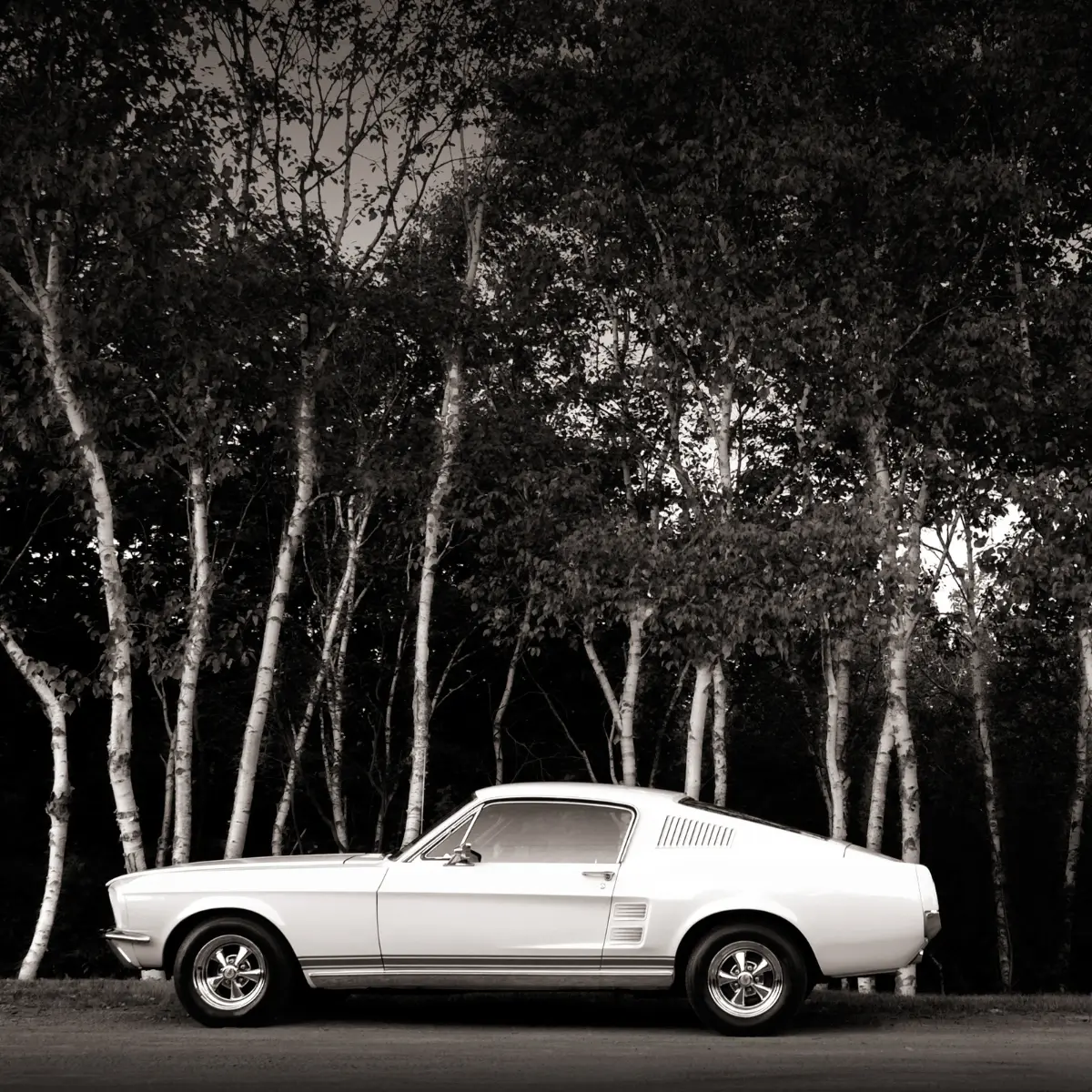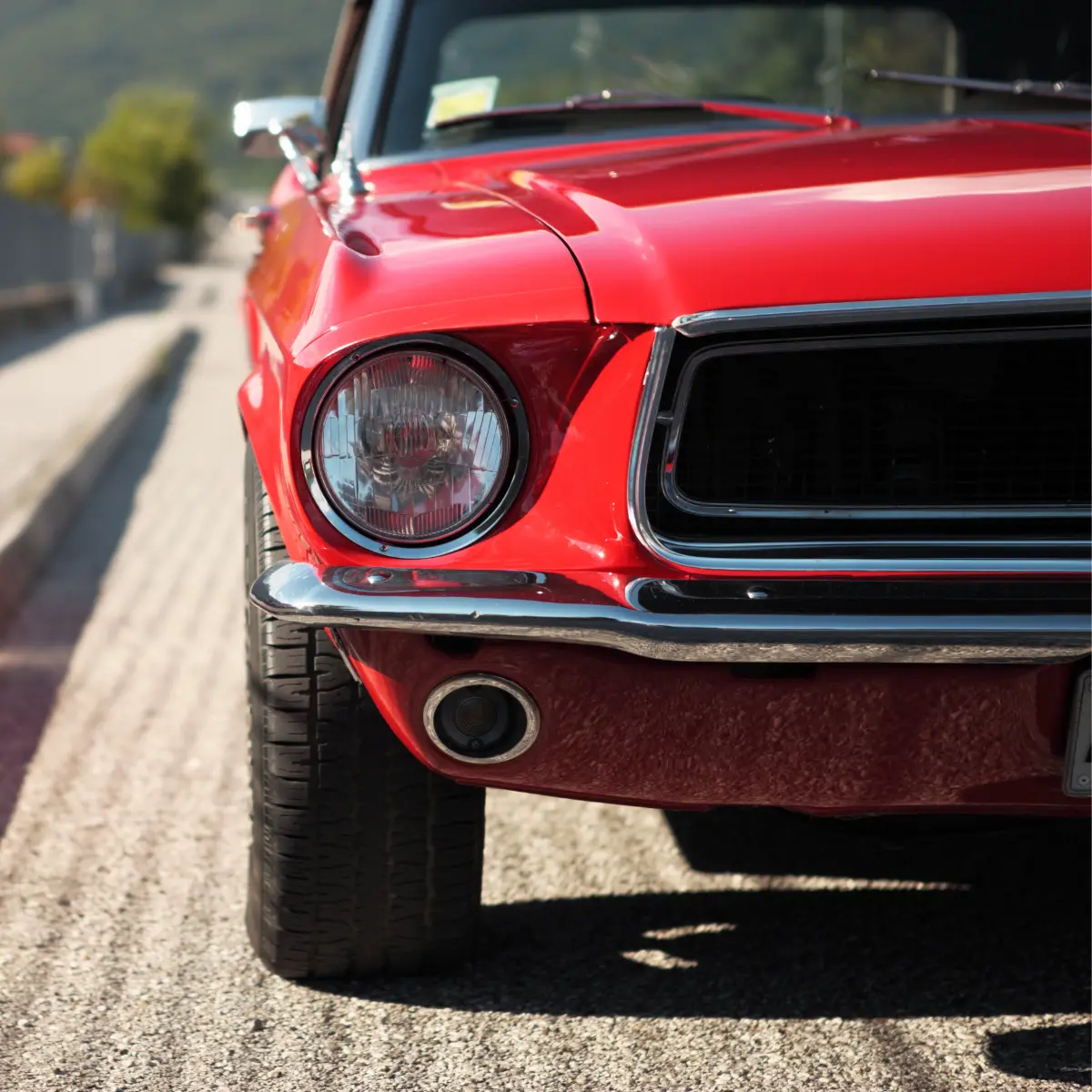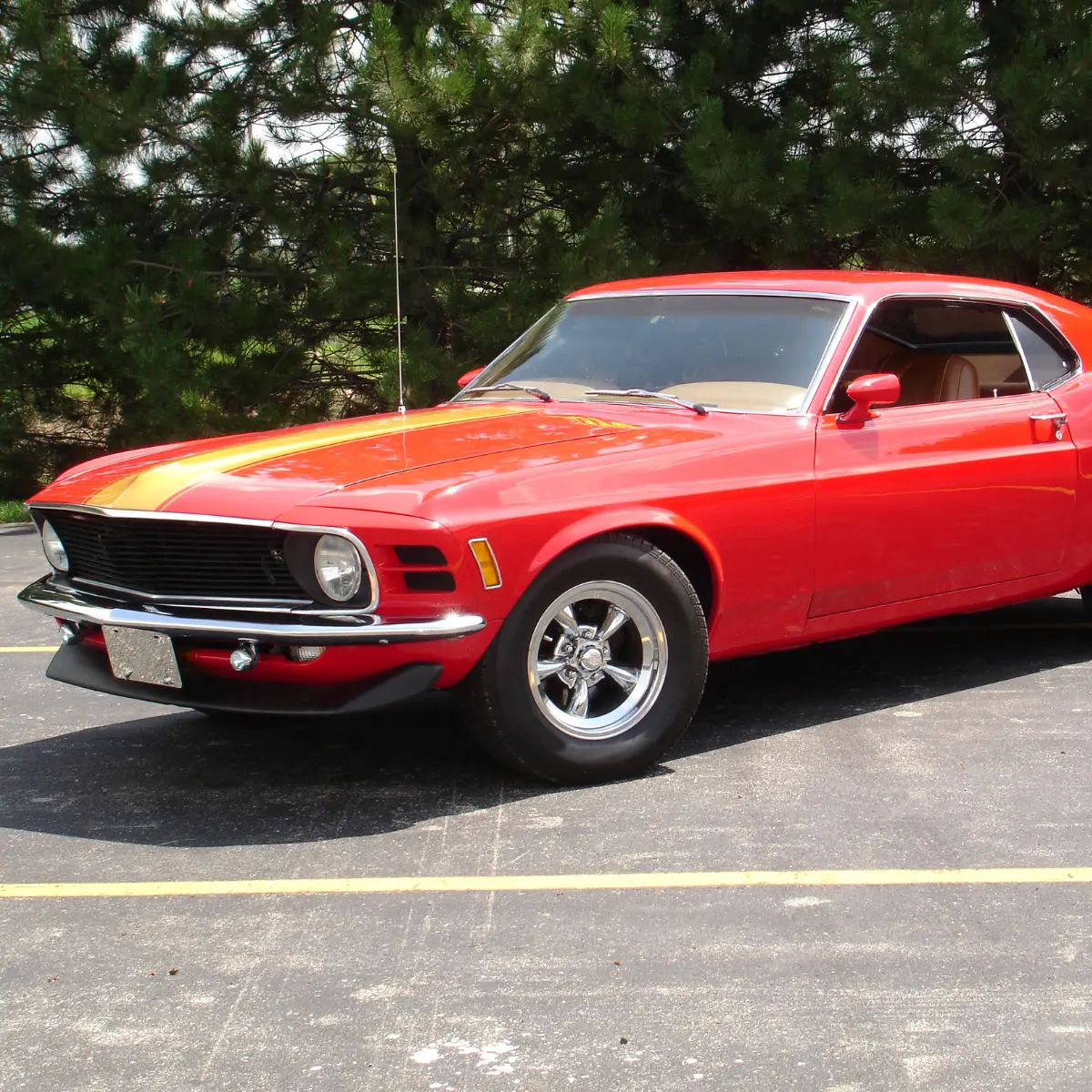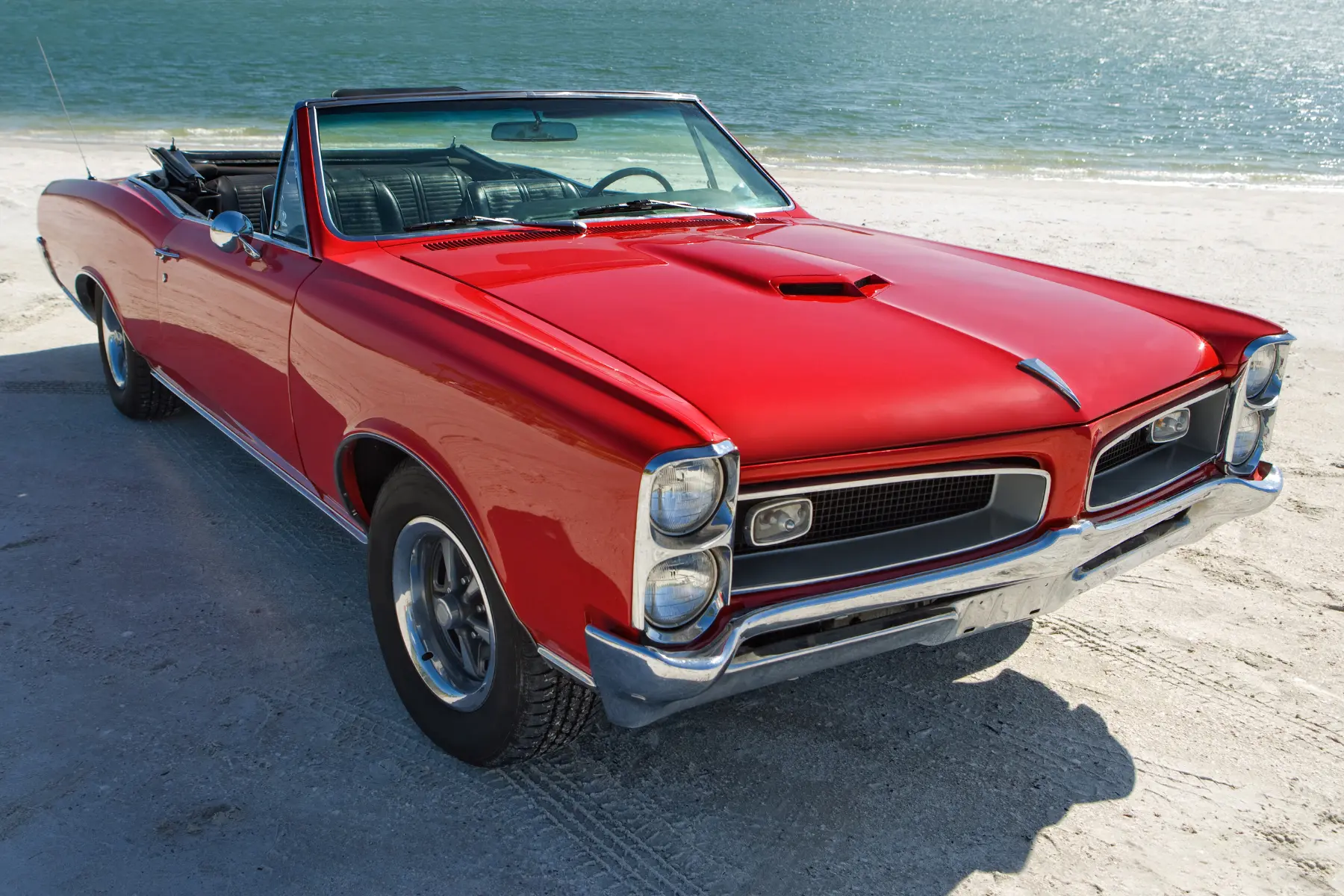The American film industry has long had an infatuation with speed, power, and the freedom of the open road. Muscle cars, with their roaring engines and sleek designs, quickly moved from the asphalt of American highways to the silver screen, capturing the imagination of viewers worldwide. The emergence of muscle cars in cinema during the mid-20th century marked a significant cultural shift, intertwining automotive design and cinematic art in a way that had never been seen before. As these vehicles raced across movie screens, they not only showcased the pinnacle of automotive engineering but also reflected a nation’s obsession with speed and power. The portrayal of these powerful machines in films played a crucial role in cementing their status as film industry car icons of American culture and ingenuity.

Iconic Movie Cars and Their Legacy in Film
The Role of Muscle Cars as Characters
Muscle cars in film often go beyond the background to play pivotal roles within the narrative, effectively becoming characters in their own right. They’re not just vehicles; they’re partners to the protagonists, emblematic of their personalities, struggles, and journeys. For instance, the 1968 Ford Mustang GT 390 in “Bullitt” isn’t just a car; it’s a representation of Steve McQueen’s cool and collected demeanor. Similarly, the 1970 Dodge Challenger in “Vanishing Point” symbolizes freedom and rebellion, crucial themes of the film. These cars are woven into the plot, driving the story forward both literally and metaphorically. Through this dynamic role, muscle cars contribute significantly to the storytelling, enhancing the emotional and visual impact of the narrative.
Enhance Storytelling and Audience Engagement
The presence of muscle cars in films adds a layer of excitement and engagement that resonates with audiences. The sound of a muscle car’s engine or the sight of its silhouette speeding down a lonely road can evoke feelings of adventure and nostalgia. This connection enhances storytelling by adding an element of spectacle and depth, making scenes more memorable and impactful. The visceral experience of seeing and hearing these powerful cars in action captivates viewers, creating moments that stick with audiences long after the movie ends.
Their Influence on Popular Culture
Models like the 1969 Dodge Charger, famously known as the General Lee from “The Dukes of Hazzard,” have become cultural icons, inspiring generations of fans to mimic their style or even own a piece of movie history. These cars have sparked trends in automotive design, with manufacturers sometimes re-releasing classic models or incorporating design elements seen in films. Collectors and enthusiasts seek out these vehicles, not just for their performance but for their cinematic heritage. Moreover, the lore surrounding these cars often bleeds into everyday language, with terms and phrases associated with them becoming part of the lexicon.
Thrill of the Chase: Muscle Cars in Cinema Car Chases
The Most Electrifying Car Chases in Film
Car chase scenes are an exhilarating staple of action cinema, offering viewers high-speed thrills and edge-of-the-seat excitement. Here is a breakdown of some of the most electrifying cinema car chases that have set the standard for what audiences expect from high-octane film action:
- “Bullitt” (1968): The car chase through the hilly streets of San Francisco, featuring Steve McQueen behind the wheel of a Ford Mustang GT, is legendary. This scene set a new standard for car chases in cinema with its unprecedented realism and excitement. The combination of skilled driving, innovative camera work, and the visceral sound of roaring engines captured the essence of a real car chase, making it a benchmark for all future car chase scenes. The sequence’s impact on film and pop culture is immense, influencing not only how chase scenes were filmed but also highlighting the car as an extension of the character’s persona.
- “The French Connection” (1971): This film’s gritty chase scene under the elevated train tracks in New York City remains one of the most tension-filled sequences ever filmed. Famous for its realism and the actual risk involved in the stunts, it showcases a raw, unpolished side of car chases that was rarely seen before. The chase is not just about speed but also strategy and danger, reflecting the film’s overall tone and adding depth to its narrative. This scene set a precedent for integrating car chases into the storyline, enhancing both the action and the plot’s urgency.
- “Mad Max: Fury Road” (2015): A modern masterpiece, this film is essentially one continuous car chase across a dystopian landscape. It showcases a variety of outrageous vehicles, each uniquely designed, contributing to the film’s rich visual tapestry. The non-stop action, combined with practical effects and stunts, creates a heart-pounding experience that revitalizes the genre. The innovative use of vehicles not just as modes of transportation but as moving stages for character development and action redefined what a car chase could be, blending creativity with high-octane excitement.
- “The Fast and the Furious” Series: This franchise is synonymous with elaborate chases and over-the-top stunts, pushing the boundaries of cinematic car chases. Known for its spectacular scenes featuring muscle cars, precision driving, and jaw-dropping action, the series has elevated car chases into a form of high art. Each installment ups the ante, combining character-driven stories with incredible vehicular feats, making the cars as integral to the films’ identities as the characters themselves. Unquestionably, the franchise has had a significant impact on both automobile culture and film, motivating both a new generation of filmmakers and auto fans.
Car chases in the film offer a thrilling escape, combining speed, skill, and storytelling into sequences that resonate with audiences worldwide. These examples not only demonstrate the technical prowess and creativity of filmmakers but also illustrate how car chases can be integral to character and plot development. As technology and storytelling evolve, the legacy of these iconic chases continues to inspire filmmakers to push the limits of what’s possible on the big screen, ensuring the car chase’s place in cinematic history for years to come.
The Art and Craft Behind Filming
Directors and cinematographers collaborate closely with stunt coordinators and drivers to choreograph these complex sequences. The use of camera cars, cranes, drones, and advanced rigging allows filmmakers to capture dynamic shots that convey the speed and danger of the chase while ensuring the safety of everyone involved. Editing and sound design play crucial roles in enhancing the realism and intensity of the scene, with each cut and sound effect carefully timed to maximize impact.

How Muscle Cars Contribute
The aesthetic appeal of car chases in films is significantly heightened by the presence of muscle cars, with their distinct designs and powerful sounds adding an irreplaceable dimension to the spectacle. The roar of an engine, the sleek lines of the car as it navigates through obstacles, and the sheer power on display are elements that only muscle cars can bring to a chase scene. These vehicles, with their iconic status and cultural significance, add a layer of depth and excitement to the narrative, making the chase sequences not just about the action, but also about showcasing automotive artistry at its finest.
Muscle Car Dealers and the Vintage Car Market
The Surge in Popularity of Vintage Muscle Cars
The allure of vintage muscle cars has significantly amplified following their exposure in popular films, captivating audiences worldwide and creating a distinct market trend. This surge in popularity is not just about the cars themselves but the stories they tell and the eras they encapsulate. Let’s dive into the multifaceted reasons behind this phenomenon, exploring how cinema has rekindled the flame for these powerful machines:
- Increased Visibility and Desire: The moment a muscle car features prominently in a blockbuster film, it transcends being a mere vehicle; it becomes a star, captivating a global audience. This exposure ignites a burning desire among fans and collectors to own a tangible piece of cinematic history. The appeal of cruising in a car that’s dazzled on the big screen adds an extraordinary layer of appeal, making these popular cars in movies highly sought after.
- Nostalgia and Emotional Connection: For many, vintage muscle cars are not just vehicles; they are time machines. They offer a pathway to reconnect with youth, a simpler time, or a cherished memory sparked by the cinema. This nostalgia and emotional connection drive enthusiasts to seek out and acquire these powerful symbols of the past. The visceral experience of watching these cars in action on the silver screen, combined with the memories of bygone eras, creates a compelling urge to own and preserve a piece of that history, deepening the bond between car and collector.
- Investment Opportunity: As the spotlight on vintage muscle cars grows, so does their monetary value. Recognizing this, savvy investors and collectors view these vehicles as valuable assets, banking on their appreciation over time. The increasing demand, coupled with the finite supply of these iconic machines, ensures their status as profitable investments. This perspective transforms the act of purchasing a vintage muscle car from a mere acquisition to a strategic financial decision, promising potential returns in the future while enjoying the prestige and pleasure of ownership in the present.
From the tangible thrill of ownership to the intangible bonds of community and nostalgia, the reasons behind this surge are as varied as they are compelling. As these cars continue to captivate the imagination of enthusiasts and collectors alike, their legacy is secured, ensuring that they remain cherished symbols of cultural and automotive history.
The Evolution of Car Movies and Societal Reflection
Societal Values and Technology
As the automotive industry advances, introducing electric vehicles and autonomous driving capabilities, car movies have adapted, incorporating these innovations into their narratives. This reflects a broader societal embrace of technology and a growing awareness of environmental concerns. Additionally, the themes and characters in car movies have evolved to reflect changing attitudes towards diversity, gender roles, and community. By weaving these contemporary issues into their stories, car movies not only entertain but also offer commentary on the times, making them a valuable cultural artifact.
Car Films and Broader Cultural Trends
The cultural impact of movie cars extends into the automotive and fashion industries, where the sleek designs, speed, and power of muscle cars showcased on screen inspire designers and manufacturers. This inspiration often materializes as merchandise, apparel, and special edition cars designed to capture the spirit of the films. As discussed before, catchphrases from these films often find their way into everyday language, while their soundtracks can define music trends and influence what people listen to. The visual style of these movies, including the cars themselves, can set fashion and design trends, influencing everything from what people wear to how they customize their vehicles.
Car Culture and Consumer Preferences
Their prominence in film and media has helped cultivate a global community of enthusiasts. Car shows dedicated to muscle cars are prime examples of this celebration, drawing crowds from all corners of the globe. These events serve as a congregation for aficionados to showcase their prized possessions, marvel at the meticulous restoration of classic muscle cars in cinemas, and witness the latest advancements in automotive engineering. Similarly, muscle car clubs offer a more intimate setting for fans to connect. These clubs often organize rallies, road trips, and charity events, providing members with opportunities to not only display their vehicles but also to engage in activities that celebrate the muscle car culture. The sense of belonging and mutual respect within these communities emphasizes the deep connection that members share with their vehicles and with each other.
Online forums and social media platforms have further expanded the reach of the muscle car community, breaking geographical barriers and enabling enthusiasts to share their passion with a global audience. These digital spaces are rich with shared stories, technical knowledge, and mutual appreciation, allowing for the exchange of information and experiences. From restoration tips and performance enhancement discussions to historical trivia and personal anecdotes, these online communities thrive on the collective enthusiasm for muscle cars.

The journey of muscle cars through the landscape of American cinema is a testament to their enduring legacy and cultural significance. These vehicles have transcended their original purpose, evolving from mere modes of transportation to iconic symbols deeply embedded in the fabric of American identity. Their portrayal in films has mirrored and influenced societal values, technological advancements, and aesthetic trends over decades, making them more than just cars—they are artifacts of cultural history. This enduring legacy is a reflection of the muscle car’s ability to adapt and remain relevant, continually resonating with new generations while honoring the spirit of freedom and rebellion that originally defined them. As cinema evolves, the role of muscle cars within it serves as a constant reminder of the power of storytelling and the timeless appeal of these mechanical marvels.
